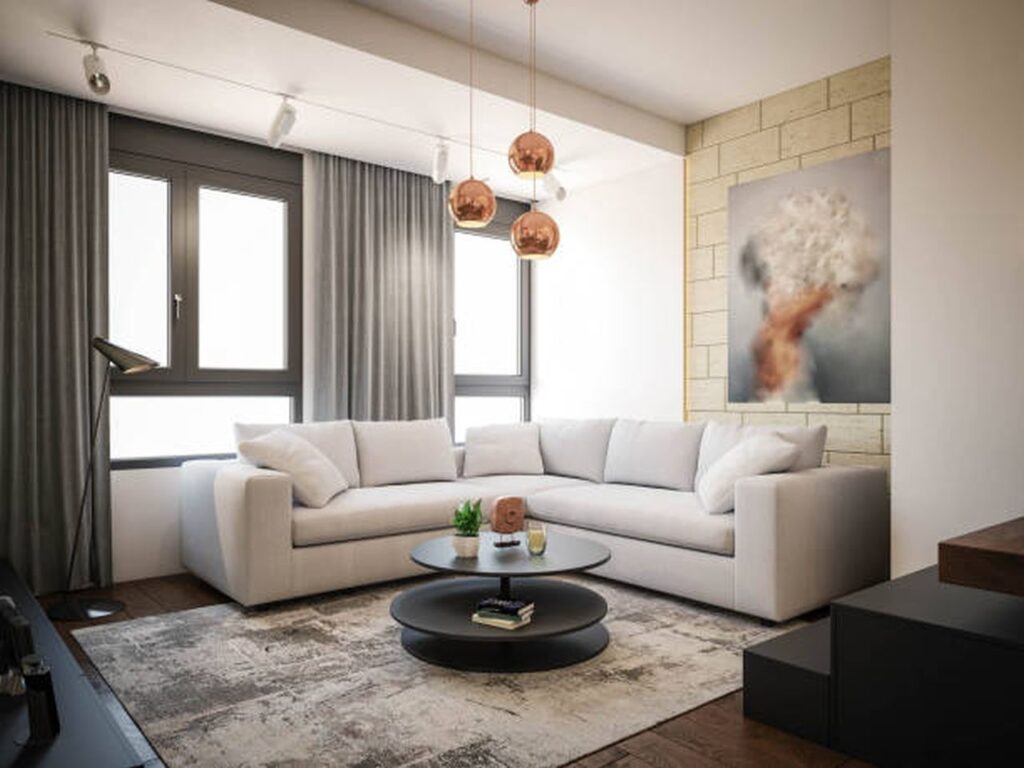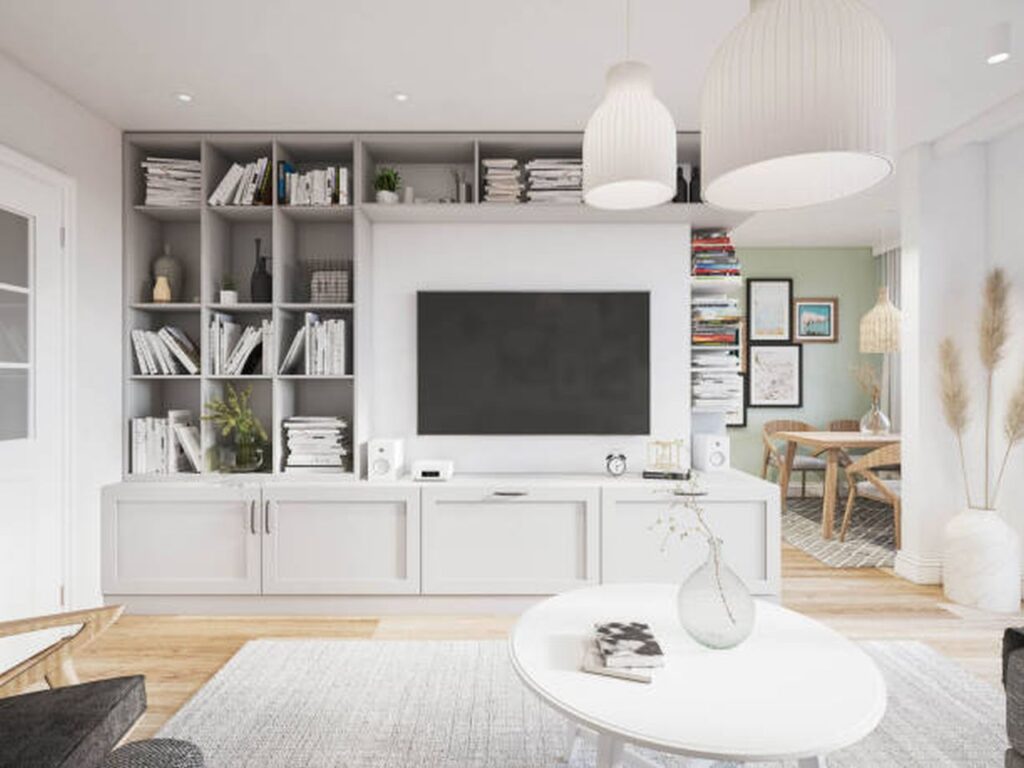Whether you’re running a 200-person firm or just starting as a solopreneur, using the best interior design software will go a long way toward helping you achieve success. Not only can the right program or app make it easier to deliver top-notch results, but it can also streamline your business’s day-to-day operations.
(After all, everyone knows that best results happen when designers, clients, and vendors are all on the same page, so it’s only natural to want to bring that same level of organisation to your behind-the-scenes work.) But, of course, finding the right interior design program isn’t a one-software-fits-all situation.
Each piece of interior design software has a certain specialisation—be it room design, photo-editing, or project management—plus you might create some platforms with larger or smaller firms in mind.
So, how do you find the right one to match your business’s needs? Read on to discover the top interior design apps and software that should be on every decorator’s radar. Everyone has something here, whether you’re on the hunt for computer-aided design (CAD) tools or a client management app.
Autodesk Autocad Lt
AutoCAD LT is one of the most popular interior design programs today, used by decorators, architects, engineers, construction professionals, etc. This reliable software allows professionals to design, draft, and precise document drawings with 2D geometry.
A comprehensive suite of editing and annotation tools and an intuitive user interface make this a top designer pick. An integrated AutoCAD web application with a simplified interface—and no software installation required—lets you work on sketches online from almost any computer. Users can view, edit, annotate, and create drawings anytime, even offline, on a smartphone or tablet with the mobile app.
And thanks to its share and trace settings, you can circulate a project with the rest of your team or offer feedback without accidentally altering an existing drawing. AutoCAD LT is compatible with both Mac and Windows operating systems, and the most recent version also offers cloud connectivity, updated measurement functionality, and faster performance time. AutoCAD LT offers a free trial, followed by a monthly fee of $55.
Sketchup Pro
SketchUp Pro’s modelling suite allows design professionals to find fast, easy 3D modelling for passive buildings to contemporary furnishings. First, create detailed scaled drawings in 2D, then add custom styles and materials that will bring your vision to the screen. This design software is compatible with virtual reality platforms like Microsoft HoloLens, HTC Vive, and Oculus, which means you can walk your clients through an in-progress project.
In addition to its classic desktop interface, SketchUp also offers a web tool and unlimited cloud storage, so you can easily store, collaborate, and share work. The software also enables designers to measure building data and analyse anticipated energy use, daylighting, occupant thermal comfort, and HVAC so you can accurately determine performance and hit post-occupancy goals.
And once you’ve completed your rendering, SketchUp Pro will generate a report so that all stakeholders can stay in the loop. SketchUp Pro is available for an annual fee of $269, but a free version offers a more lightweight, web-based option if you’re on a budget.
Turbocad
The latest versions of TurboCAD offer professional software for experienced 2D and 3D CAD users. The architectural design suite is powered with mechanical design and modification tools, enabling users to do everything from a prototype with 3D printers to draft up furniture designs. Available for both Mac and Windows operating systems, TurboCAD bills itself as “a powerful alternative” to AutoCAD LT, with photo-realistic surface modelling and lighting that allow one to create powerful presentations.
(Plus, designers working with sheet metal or wood may particularly enjoy materials-specific tools.) Internal and external database connectivity and file-sharing options (including support for files from Autodesk, SketchUp, and others) mean your team can integrate and collaborate at a high level with ease.
Though this room design software has a wide breadth of technical offerings, its setup wizard, context-sensitive help, and flexible user experience will give you the support you need. TurboCAD users will have a permanent licence—download it once, and it’s yours forever—and an array of pricing options will allow you to select interior design software that fits comfortably within your budget.
Autodesk 3ds Max
Ready to take full artistic control of your renderings? With Autodesk’s 3ds Max, clients will experience your proposed work in beautiful, high-tech detail. The interior design software delivers superb graphics for 3D animations, models, games, and images. Use the toolsets to create high-quality renderings and perfect every interior and object down to the last detail.
(Autodesk’s material, texture, and colour editor offer the finishing touch, making your designs look more photo-realistic.) In addition, the integrated, interactive Arnold renderer allows users to view accurate and detailed previews while they work.
When it comes to productivity, automated processes can help streamline deadlines and content production, so you can spend more time being creative and less time managing workflow. This software costs $215 per month and is only compatible with Windows operating systems.
Autodesk Revit
Looking for interior design software that can seamlessly transition from sketches to construction? Consider Autodesk Revit. Once you’ve completed a conceptual design, Revit will translate your sketch into building information modelling (BIM). As a result, your project’s MEPs, structural engineers, and construction teams can have a roadmap for accomplishing the task at hand.
Revit also automatically updates floor plans, elevations, and sections—not to mention offers 3D visualisations to see a building before it’s built. In addition to its effective modelling and graphic components, collaboration across multidisciplinary teams is a key component of Revit. Using BIM 360 Design work sharing, Revit connects teams in the cloud for higher-quality collaboration with minimum IT intervention.
Team members can share and save work rather than switch between email, file transfer protocol (FTP) sites, and multiple other platforms. Revit is compatible with Windows only but can be run on Mac OS using Parallels. Currently, Revit is available in a subscription format—starting at $320 per month—but solopreneurs on a budget can pay as they go through the software’s Flex program.

Archicad 25
Among the most popular choices in architectural rendering software, Archicad, which Graphisoft develops, offers robust tools, an intuitive interface, and a BIM application that allows you to focus on creating beautiful designs instead of keeping up with the tedious logistics.
In its most recent version, Archicad 25, users can quickly switch from 2D to 3D models, document zone-specific data, and enjoy the platform’s more precise cost estimations. And thanks to its Native Survey Point functionality (which supports IFC and BCF file exchange) and compatibility with other platforms such as Revit and Solibri, users can freely collaborate with other key stakeholders.
Archicad is available for both Mac and Windows operating systems, plus it’s available for full perpetual, term-based, and educational licences. (That way, you can find a tier that matches your budget and needs.)
Easyhome Homestyler
If all you need is a streamlined tool to shape the plans circulating in your head, Homestyler may be the best room design software for you. With this program, you can easily build floor plans in 2D and 3D with accurate measurements once you’ve mastered the nuts and bolts, head over to the Homestyler library, where you can pepper the rendering with thousands of real products, including paint, flooring, furnishings, art, and more.
Your chosen items will be placed in your design using a 1:1 scale. Homestyler will also create a photo-realistic panorama visualisation for you and your clients to walk through. Plus, a coordinating app (available on iOS and Android) lets you design on the go.
While the basic platform is free of charge, users can upgrade to a pro or master account for a monthly fee of $5 and 10 dollars, respectively. So if you’re starting your interior design business and are on a budget—or want an easy-to-learn tool that gets the job done—this could be the application for you.
Inferno
As a cloud-native design platform, Infurnia allows architects, interior designers, clients, and vendors to collaborate and interact during the design process. Detailed floor plans with multilayered walls, advanced tiling and roofing, false ceiling, and customizable cabinet tools are available to help you outline your projects in detail.
Plus, plans created in 2D can be instantly converted to accurate 3D depictions, while drafting tools can be used to add doors, windows, and beams to match your client’s site. Finally, decorate with furniture from Infurnia’s partners’ catalogue, or create your library of materials, wallpapers, hardware, appliances, furnishings, and more.
While Infurnia’s software is less robust than some other options, this software is easy to learn, so you can customise and share with ease. The Professional membership is free, but Business and Enterprise tiers cost $50 each month per designer.
Live Home 3d Pro
With Live Home 3D Pro, you can efficiently create precise layouts and furnish rooms—or an entire building. Once 2D plans are drafted (import and trace blueprints or draw from scratch), the software automatically translates your plan into 3D. You can also look at your 2D and 3D models side by side, courtesy of the platform’s new split mode.
The desktop version (for Mac or Windows) offers advanced drawing tools, elevation views, a materials library with thousands of furnishings and appliances, and customised materials and lighting editors.
Geopositioning and daylighting options help determine siting and lighting decisions, and video walk-throughs—which you can record day or night—can be generated and exported as Ultra HD files. In addition, plans and videos can be saved and shared in multiple file formats.
At $50 for the Mac or Windows-powered desktop program—and a free interior design app with optional, in-app purchases— industry professionals on a budget will enjoy this introduction to interior design software that can handle some additional complexity.
Substance 3d By Adobe
Adobe’s Substance 3D suite allows designers to create and add detailed digital textures and materials to their projects. With Substance Source, Adobe’s high-end 3D materials library, you can browse hundreds of high-quality PBR (physical-based rendering) materials, such as textiles, tiles, flooring, wood, stone, etc.
In addition, designers and architects can curate texture libraries and collections with the Substance Alchemist app. Mix and match existing materials, or invent new ones using your photographs and high-res scans. you can’t beat the 3D texturing suite offered in Substance for projects that require detailed references. (Plus, anyone with an Adobe Creative Cloud will find a lot of synergy between this software and their other go-to platforms.)
Morpholio
Launched by a team of architects-turned-software developers, Morpholio’s applications include digital tools for sketching, journaling, and presenting creative work. In 2021, Morpholio divided its popular room design software—available for iOS devices and Mac desktops—into three separate entities. Find ample inspiration with Morpholio Board, which connects to your Pinterest, allows you to create custom boards, and provides plenty of palettes and furniture ideas.
The platform’s Board Pro option features Automated Visual Assembly (AVA) to navigate the creative process seamlessly. (Or, if you’d like to take your brainstorming to a tablet, Morpholio’s Journal allows you to sketch freehand and annotate your best ideas.) Ready to design a space? Morpholio Trace offers a streamlined creative experience, a moveable 3D viewer, instant scaling functionality, and an AR perspective finder.
Spoak
Co Founded in 2018 by Hilah Stahl, who struggled to find the proper tools to decorate her first New York City apartment, Spoak is an online destination that is loved by DIY enthusiasts, budding interior designers, and students. With its signature Project Editor and rendering tool called Viz, Spoak offers one place to create mood boards and mock-ups. However, Spock’s room design software is only one of its offerings.
Young designers can learn from Spock’s classes and resources, which teaches the basics about furniture, patterns, and design styles. Professionals who are ready to go out on their own can build a design profile, join industry events, and even apply for paying gigs. Spoak offers three platform tiers—DIY, Growth, and Designer—all of which have a monthly fee of $25 or less.
Gather
When you’re serious about taking your design business to the next level, you’ll need a solid project management system to ensure your team is on the same page. That’s what’s so great about Gather, a cloud-based platform that enables teams of all sizes to share inspiration, communicate, and create top-notch deliverables. Gathering inspiration is quick and easy, thanks to a clipper tool that allows you to save items from vendor websites to your secure library.
(This interior design software features a robust searching and filtering system, so your team will never have to look too far for the assets they need.) Once a project is underway, you can use Gather to calculate costs, assign tasks, and track important dates.
And thanks to its simple document export feature, it’ll be a breeze to make professional and comprehensive reports, schedules, and spec sheets. Pricing for Gather starts at $165 per month for five team members and will increase based on your business’s needs.

Ivy
Built to help design firms of all sizes, Ivy is a program that will help you manage your business more efficiently. Source product, send proposals and invoices and create room boards in a snap. A project tracker helps teams stay organised and boost productivity, while a time and expense tracker will help you monitor billable hours and generate reports you can share with clients.
An online payment system makes it easy to get paid via wire transfer or credit card; syncing with QuickBooks helps you stay on top of accounting, and data parsing lets you create instantaneous customised business reports. (And, if you want to keep your clients happy, there’s a dedicated dashboard that will send them daily logs and timeline updates.) Ivy’s community resources also offer a place to exchange ideas and best practices.
If you want to spend more time on creative endeavours and less time managing business operations, this option can help you streamline functions for as little as $55 per month. Finally, though Ivy is a web-powered platform, its accompanying app will help you keep tabs on your upcoming projects around the clock.
Co Construct
Designed with builders and remodelers in mind, CoConstruct simplifies communication with clients and contractors and offers financial control over projects. For example, you could shave days off projects by bundling management, task lists, invoicing, etc.
Present specs, pricing, and files in clear, client-friendly formats to enable more efficient decision-making, reduce back-and-forth chatter, and immediately show projected costs or budget tweaks as selections or change orders are made. Replicable templates and documents can also help you make more accurate estimates faster, submit bids sooner, and create proposals more easily.
Coordinate field and office visits and create timesheets, purchase orders, and invoices, all from one spot. CoConstruct’s Standard Plan starts at $99 per month, but you can unlock its upgraded Plus tier starting at $399. (Per CoConstruct’s website, prices will increase after two months.)
Conclusion
So, what is the best home design software for 2022? Well, that’s a difficult question to answer. It depends on your needs and budget. However, we hope this article has helped you narrow down your choices and given you a good starting point for finding the right program.
If you need any help deciding or have any questions about these programs, please don’t hesitate to reach out to us. We want to ensure that you find the perfect home design software for your needs and would be more than happy to offer our assistance. Thanks for reading!
Faqs
What Software Do Architects Use To Design Houses For Free?
FreeCAD is a great tool for both professionals and hobbyists and can be used in the design, architecture, construction, mechanical engineering, and other fields.
What Software Is Used To Design Houses?
Virtual Architect Ultimate is one of the easiest home design software to use. It lets you do everything from redesigning your bathroom to building your dream home from the ground up, all with a mouse click.
What Is Better, Sketchup Or Chief Architect?
Chief Architect works best for architecture firms that need a program focused on building 3D renderings and detailed 2D construction documentation. SketchUp is more versatile, making it suitable for residential and commercial construction, although it is best suited to 3D sculpting and product modelling.
Do Professionals Use Sketchup?
Definitely! As well as the architects, interior designers and industrial designers mentioned above, SketchUp is used by landscape designers, video game designers and many more. Furthermore, as 3D printing becomes more common, new uses for SketchUp are being discovered.
Is Sketchup Better Than Revit?
Overall, Revit is aimed at more complex projects of whole infrastructures. Of course, Sketchup would handle such a project too, but it’s much better fitted for interior design thanks to 3D visualisation tools.

